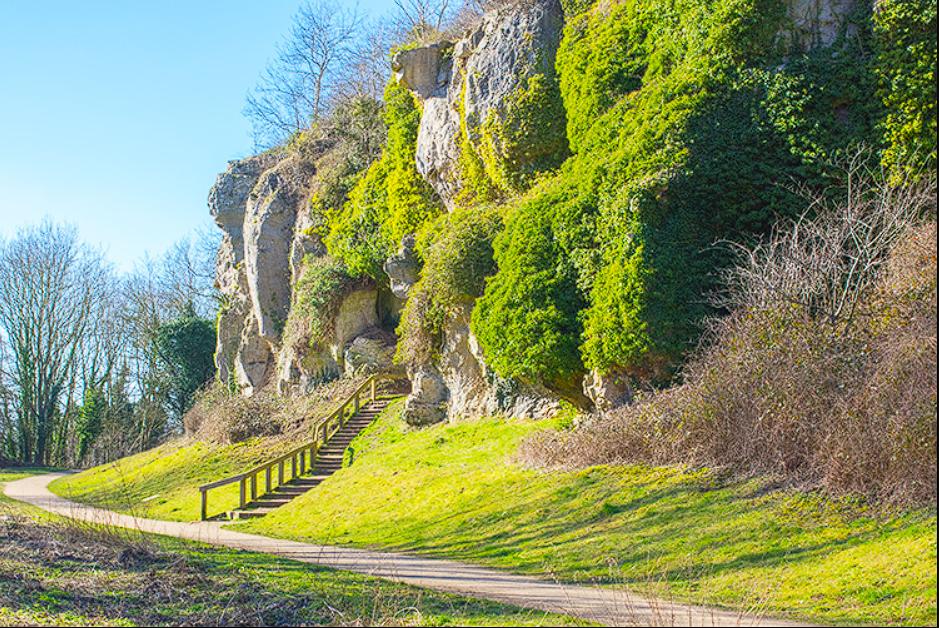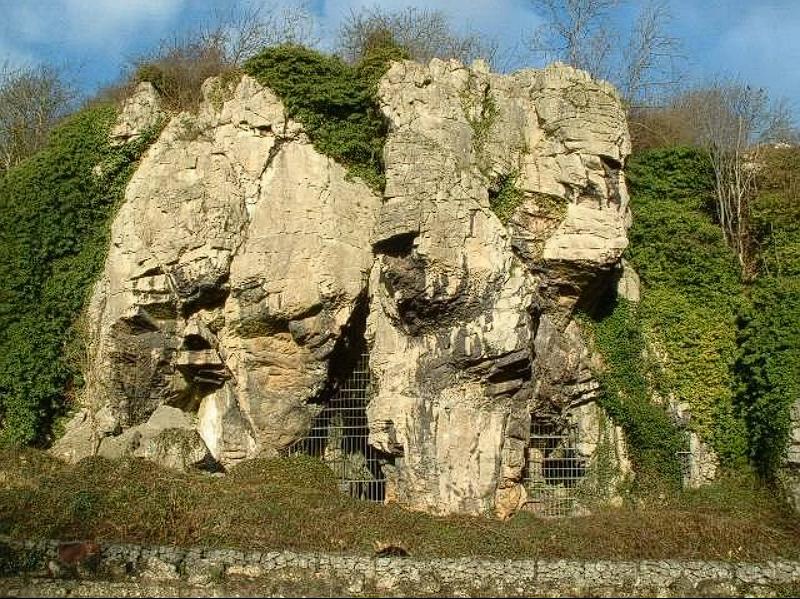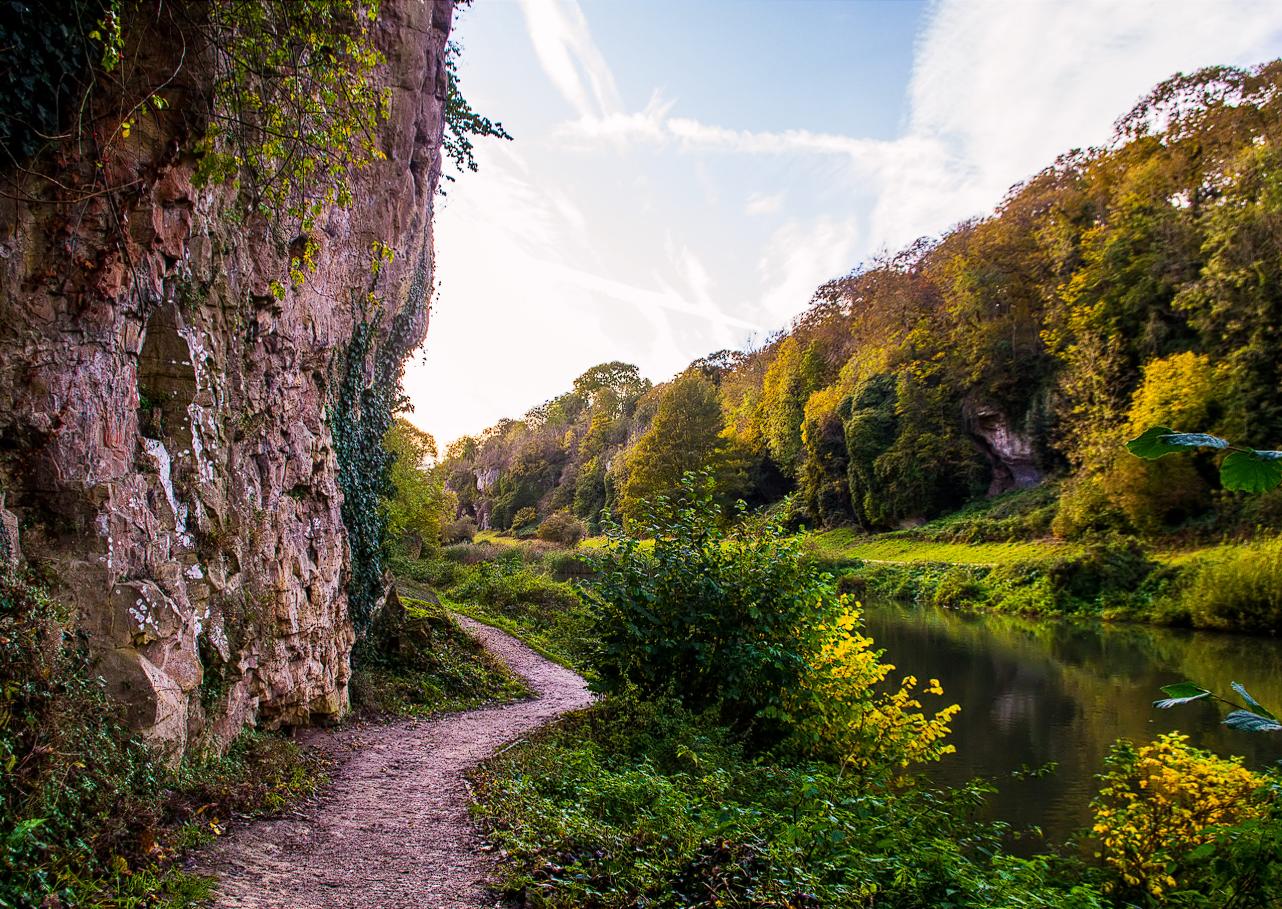Robin Hood Cave, located at Creswell Crags on the border between Derbyshire and Nottinghamshire, England, is a significant archaeological site that offers a fascinating glimpse into the lives of both Neanderthals and Homo sapiens during the Ice Age.
A Journey Through Time at Robin Hood Cave
Robin Hood Cave’s history spans thousands of years, revealing how different human groups adapted to the changing environment.
Neanderthal Inhabitants
Neanderthals were the first to occupy Robin Hood Cave, using it as a shelter and workshop for their tools.
- Early Occupation:
- Neanderthals inhabited Robin Hood Cave until approximately 40,000 years ago, making it one of their earliest known settlements in the region.
- Their presence provides valuable insights into Neanderthal behavior and adaptation.
- Tool Crafting:
- Neanderthals crafted hand axes and scrapers from materials like flint, quartzite, and clay-ironstone.
- These tools were essential for survival in the Ice Age grasslands, demonstrating their resourcefulness and skill.
- Adaptation to Ice Age:
- Their presence in Robin Hood Cave highlights their ability to adapt to the harsh conditions of the Ice Age.
- They utilized the cave’s natural shelter and resources to thrive in a challenging environment.
Homo Sapiens Arrival
Homo sapiens arrived at Robin Hood Cave around 22,000 years ago, continuing to occupy the cave through the end of the Ice Age and beyond.

- Later Settlement:
- Homo sapiens took up residence in the cave approximately 22,000 years ago, marking a significant shift in the site’s inhabitants.
- Their arrival coincided with the later stages of the Ice Age, indicating their adaptability to changing climates.
- Diverse Tool Collection:
- Homo sapiens left behind a diverse collection of tools, remains of butchered animals, and other artifacts.
- These findings provide evidence of their hunting, toolmaking, and daily activities within the cave.
- Artistic Expression:
- Notably, they left behind an exquisitely engraved horse’s head on a fragment of horse rib bone, showcasing their artistic abilities.
- This artifact is a testament to their creativity and symbolic thinking.
Creswell Crags Location
The cave’s location at Creswell Crags, a secluded limestone ravine, played a crucial role in its suitability for ancient human habitation.

- Secluded Limestone Ravine:
- Creswell Crags is a secluded limestone ravine located on the boundary between Derbyshire and Nottinghamshire, England.
- The ravine’s natural features provided shelter and resources for both Neanderthals and Homo sapiens.
- Proximity to Villages:
- The site is close to the villages of Creswell and Whitwell, making it accessible for modern-day researchers and visitors.
- Its location allows for ongoing archaeological studies and public access.
- Natural Resources:
- The surrounding area provided access to various natural resources, including water, food, and materials for toolmaking.
- This abundance of resources contributed to the site’s appeal for ancient inhabitants.
Significance and Legacy
Robin Hood Cave’s archaeological findings have significantly contributed to our understanding of ancient human behavior and adaptation.
Archaeological Importance
The cave’s artifacts and remains provide valuable insights into the lives of Neanderthals and Homo sapiens during the Ice Age.
- Understanding Neanderthals:
- The Neanderthal artifacts found in Robin Hood Cave offer a glimpse into their toolmaking techniques and daily activities.
- These findings help researchers understand Neanderthal culture and adaptation.
- Homo Sapiens Culture:
- The Homo sapiens artifacts, including the engraved horse’s head, shed light on their artistic expression and symbolic thinking.
- These findings contribute to our understanding of early human culture and behavior.
- Chronological Record:
- The cave’s layers of occupation provide a chronological record of human habitation, allowing researchers to study changes over time.
- This record helps to reconstruct the timeline of human evolution and migration in the region.
Research and Preservation
Ongoing research and preservation efforts at Creswell Crags ensure that Robin Hood Cave’s legacy is protected and shared with future generations.
- Ongoing Studies:
- Researchers continue to study the artifacts and remains found in Robin Hood Cave, uncovering new insights into ancient human life.
- These studies contribute to our understanding of human evolution and cultural development.
- Preservation Efforts:
- Preservation efforts ensure that the cave and its artifacts are protected from damage and decay.
- These efforts maintain the site’s integrity for future research and public access.
- Educational Opportunities:
- Creswell Crags offers educational opportunities for visitors, providing insights into the site’s history and significance.
- These programs raise awareness about ancient human habitation and the importance of archaeological preservation.
Public Access and Tourism
Robin Hood Cave and Creswell Crags are open to the public, allowing visitors to experience the site’s historical significance firsthand.

- Visitor Center:
- Creswell Crags features a visitor center that provides information about the site’s history and archaeological findings.
- The center offers exhibits, displays, and educational programs for visitors of all ages.
- Guided Tours:
- Guided tours of the cave and surrounding area provide visitors with a deeper understanding of the site’s significance.
- These tours offer insights into the lives of Neanderthals and Homo sapiens who inhabited the cave.
- Tourism and Education:
- The site’s accessibility promotes tourism and education, allowing people to learn about ancient human history and archaeology.
- It serves as a valuable resource for both researchers and the general public.
Robin Hood Cave stands as a testament to the resilience and adaptability of ancient human populations. Its archaeological findings continue to provide valuable insights into our past, making it a significant site for research and public education.
